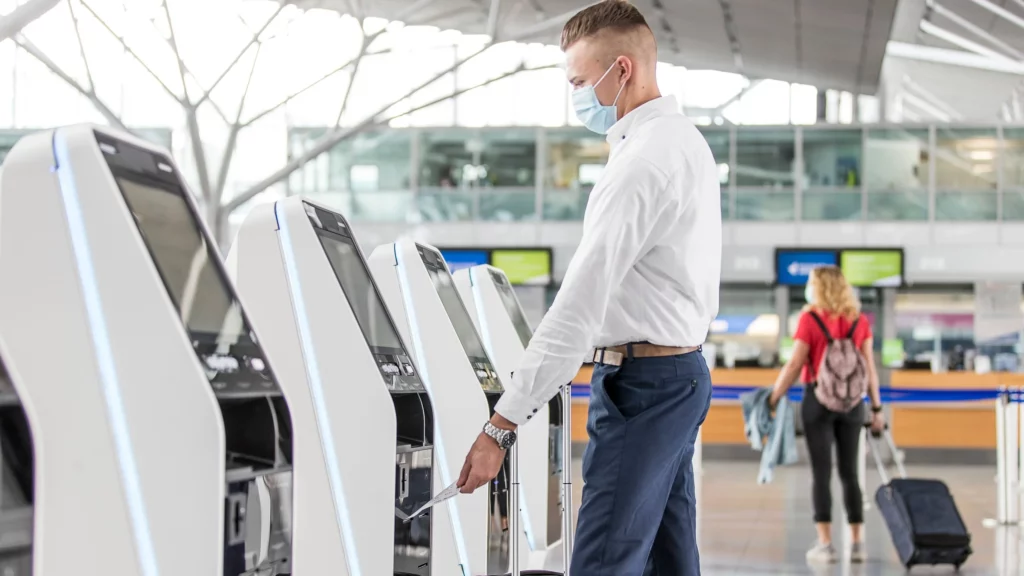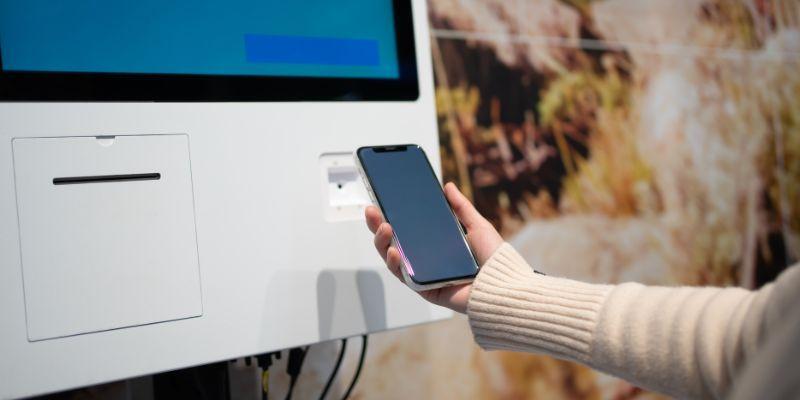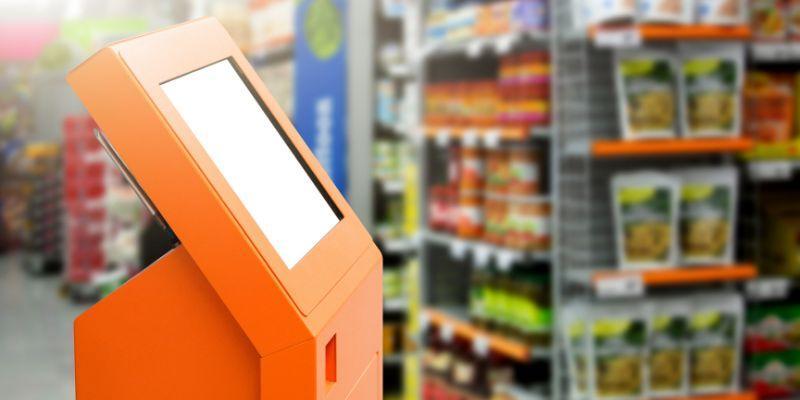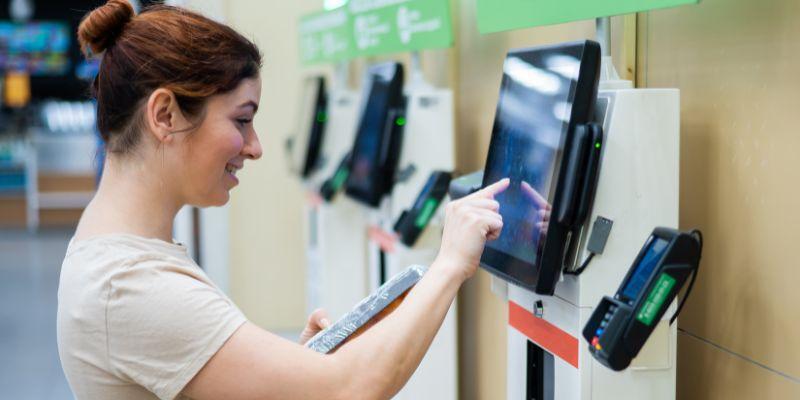If we look around, self-service kiosks are everywhere, making things easier in stores, restaurants, and more. Planning a self-service kiosk deployment basically means figuring out how to set them up and make them work well.
It’s like planning to put helpful machines in the right places. This article will help you understand how to plan this process step by step.
We’ll explain why it’s essential and what you need to think about, like where to put the kiosks, what software to use, and how to make them easy for people to use.
By the end, you’ll know how to plan and set up self-service kiosks, making things smoother for your business and customers.
Assessing Business Needs and Objectives
Before looking into a self-service kiosk deployment, thoroughly assessing your business needs and objectives is crucial. This step is like taking a snapshot of your business’s stand and where you want it to go.
So, let’s explore how to effectively assess your business needs and objectives, ensuring that your self-service kiosk deployment brings maximum benefits to your organization.
1. Identifying the Purpose of The Kiosk Deployment
Before launching into a self-service kiosk deployment, it’s essential to pinpoint the exact purpose behind it.
Clarity on the kiosk’s purpose will guide every aspect of the deployment process, whether it’s modernizing customer service, improving efficiency, or improving the overall customer experience.
By identifying the purpose upfront, businesses can ensure that the kiosks meet specific needs and deliver tangible benefits.
2. Understanding Target Audience and User Demographics
Understanding who will be using the self-service kiosks is crucial for their success. Businesses need to look into the demographics of their target audience to tailor the kiosk interface, functionality, and user experience accordingly.
Factors such as age, tech-savvyness, language preferences, and accessibility requirements should all be considered to ensure that the kiosks effectively meet users’ needs.
3. Setting Clear Goals and Objectives for The Project
Setting clear and measurable goals is fundamental to the success of any kiosk deployment project. Whether it’s increasing sales, reducing wait times, or gathering customer feedback, defining specific objectives will provide a roadmap for the deployment process.
These goals should be SMART (Specific, Measurable, Achievable, Relevant, and Time-bound) to ensure clarity and focus throughout the project lifecycle.
Choosing the Right Self-Service Kiosk Solution
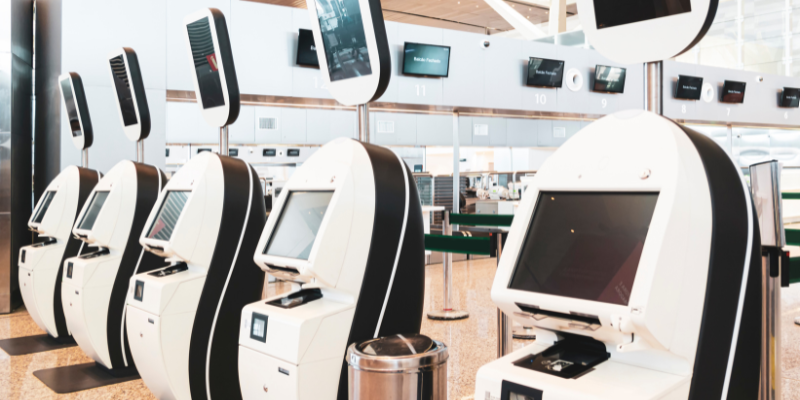
Planning a self-service kiosk deployment requires careful consideration to ensure you choose the right solution for your needs. Let’s explore the essential factors when planning your self-service kiosk implementation.
1. Hardware Considerations
When setting up self-service kiosks, it’s essential to consider the hardware you’ll need. Different types of kiosk hardware are available, such as touchscreen monitors, printers, barcode scanners, and more. Each type serves a specific purpose, so choose the ones that best fit your needs.
Scalability and flexibility are also essential factors to consider. You want hardware that can grow and adapt along with your business.
This means selecting hardware that can easily accommodate future upgrades or changes without causing disruptions to your operations. Considering these factors, you can ensure your kiosk hardware meets your current and future needs.
2. Software Considerations
Once you’ve sorted out your hardware needs, it’s time to consider the software that will power your self-service kiosks. Consider the operating systems and platforms compatible with your chosen hardware. You’ll want user-friendly and reliable software.
Customization and integration options are also crucial. You may need software tailored to your business requirements and easily integrated with your existing systems.
This ensures a smooth experience for both you and your customers. You can select the best solution for your self-service kiosk deployment by carefully evaluating your software options.
3. Security and Compliance Requirements
Security and compliance are critical when it comes to self-service kiosks. You must prioritize data protection and privacy considerations to safeguard sensitive information. Choose software and hardware solutions with robust security features like encryption and authentication protocols.
Additionally, ensure your self-service kiosks comply with industry regulations relevant to your business. This includes regulations related to data privacy, accessibility, and payment processing.
Planning the Deployment Process
Let’s explore how to plan a self-service kiosk deployment step by step so you can understand what needs to be done before your kiosks are up and running.
1. Site Assessment and Location Selection
Before installing self-service kiosks, it’s essential to assess the area where they will be installed and choose the best locations. This is called a site assessment.
We need to see if there’s enough space if it’s safe, and if people can easily use the kiosks there. We also want to pick locations where lots of people will see and use the kiosks. This helps ensure they’re practical and convenient for everyone.
2. Infrastructure Requirements
Once we know where the kiosks will go, we must ensure the place has everything necessary for them to work correctly. This includes things like electricity and an internet connection.
Also, check if the area is sturdy enough to hold the kiosks safely. Ensuring a suitable infrastructure means the kiosks can do their job without problems.
3. Timeline and Budget Considerations
It is essential to plan how long it will take to set up the kiosks and how much they will cost. We need to make a timeline to know when everything will be ready.
One must also consider how much money they must spend on the project. By planning carefully, we can make sure everything happens on time and within our budget.
4. Coordination with Stakeholders and Vendors
To ensure a smooth project, we need to talk to everyone involved. This includes the people who own the place where the kiosks will go and the companies that make and install them.
You need to work together to ensure a successful project. Communication and teamwork are vital to getting everything done right.
Designing the User Experience

Designing the user experience for self-service kiosks is all about making them simple to use. When people walk up to a self-service kiosk, they should know exactly what to do without overthinking it.
Let’s explore how we can make these kiosks easy for everyone.
1. User Interface Design Principles
When designing the user interface for self-service kiosks, one has to ensure that it is easy and enjoyable for users to interact with. Users should find the interface clear and straightforward, like when playing a game or using a toy.
It is crucial to utilize easily understandable colors, shapes, and words. Buttons should be recognizable as buttons, and instructions should be straightforward.
This approach ensures that users can confidently approach a self-service kiosk, knowing precisely what to do without encountering confusion.
2. Accessibility and Usability Considerations
Accessibility and usability are significant considerations when designing self-service kiosks. It’s essential to ensure the kiosk is accessible to everyone, including individuals with disabilities. This involves making buttons large enough to press and ensuring the screen is easy to see.
Usability focuses on creating an experience that works well for all users, regardless of age or ability. Factors such as the kiosk’s height are carefully considered to ensure comfort for children and adults.
By addressing these considerations, one can ensure that the kiosk is usable by everyone without encountering difficulties.
3. Testing and Iteration Process
After designing the user interface and confirming accessibility and usability, it’s necessary to conduct thorough testing. Testing involves trying out the kiosk to identify any potential issues. If problems arise, one must go back and make necessary adjustments.
This iterative process continues until the kiosk functions flawlessly. Testing and iterating are essential steps in warranting that the kiosk is fully prepared for widespread use by all individuals.
Implementing the Self-Service Kiosk Deployment
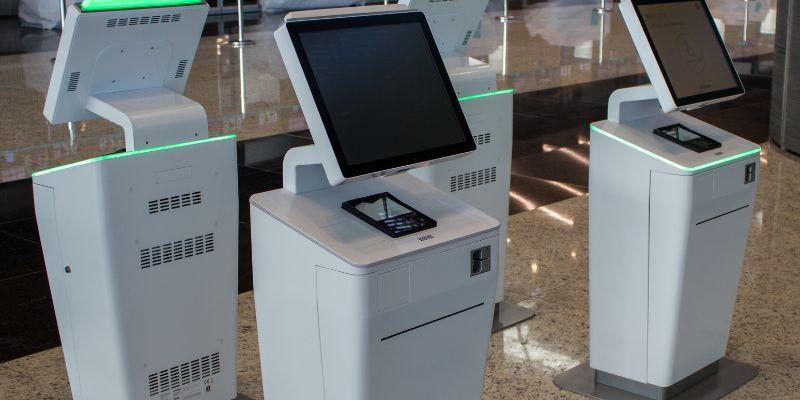
Implementing the self-service kiosk deployment is like putting all your plans into action. It’s time to turn your ideas into reality.
Planning a self-service kiosk deployment means following the steps you’ve worked out. Let’s look into how to get started making your self-service kiosk deployment happen.
1. Installation and Setup Procedures
Setting up the self-service kiosks involves placing them where they’re supposed to go and ensuring they work correctly. Once the kiosks are in their places, check to ensure everything is working smoothly, like ensuring all machine parts are working together.
2. Software Configuration and Testing
After the kiosks are set up, focus on the software inside them. It’s essential to ensure the software is set up correctly, like adjusting the settings on your phone. Ensure you test everything to ensure the kiosks can do their jobs without issues.
3. Staff Training and Support
Now, teach the people who will be using and taking care of the kiosks how they work. It’s similar to showing someone how to use a new gadget or tool. Also, they should know what to do if something goes wrong so they can fix it quickly.
4. Monitoring and Maintenance Plans
Lastly, plan to keep an eye on the kiosks and ensure they stay in good shape. If something doesn’t work out according to plan, one must have plans to fix it quickly.
Measuring Success and Iterating
Deploying self-service kiosks marks a significant milestone, but ensuring their effectiveness requires ongoing assessment and adjustment.
- Quantitative Metrics: Assess kiosk usage rates, transaction volumes, queue length, and customer wait times. These figures provide tangible indicators of the kiosks’ impact on efficiency and customer satisfaction.
- Qualitative Feedback: Gather user feedback to gauge their satisfaction and identify pain points. This could involve surveys, interviews, or simply observing user interactions. Understanding users’ experiences is fundamental for refining the kiosk experience.
If the measurements reveal areas for improvement, it’s time to iterate.
- Iterative Changes: Implement changes based on insights gathered. This might involve providing additional staff training. Iteration is essential for refining the kiosk deployment over time.
- Continuous Evaluation: Regularly revisit metrics and feedback to assess the impact of iterative changes. This cyclical process ensures that the kiosk deployment evolves to meet changing needs and expectations.
Case Studies and Examples
1. Telcel’s Success with Self-Service Kiosks
Telcel, a leading telecom provider in Mexico, sought to improve customer experience by reducing wait times and aligning service delivery. Partnering with Wavetec, they deployed self-service kiosks in 30 service centers.
The kiosks personalized the customer interaction, simplified ticket issuance, and integrated with Telcel applications, expanding service offerings. This innovation reduced wait times, increased customer satisfaction, and improved staff productivity.
2. Swiss Post’s Self-Service Kiosk Deployment with Wavetec
Swiss Post, Switzerland’s esteemed postal service, sought to revolutionize customer service through self-service kiosk deployment. Striving to manage customer flow, Swiss Post collaborated with Wavetec, a global leader in queue management solutions.
By leveraging Wavetec’s expertise, Swiss Post implemented a tailored solution featuring Self-service Kiosks, a Lobby Leader, a Centralized Engine, a Dashboard Management Portal, Web Ticketing, QR Scanning, and WebSDU across 40 branches.
This strategic deployment of self-service kiosks enabled customers to have efficient ticketing options, minimize wait times, and optimize service delivery.
Conclusion
Planning a self-service kiosk deployment involves carefully considering various factors to ensure success. Just like building a house requires a solid foundation, planning lays the groundwork for a smooth and effective deployment process.
By following the steps outlined in this guide on “How to plan a self-service kiosk deployment,” organizations can set themselves up for success.
Once deployment begins, continuous monitoring and adjustment are vital to refining the kiosk experience and overcoming any challenges. Ultimately, the deployment’s success depends on its ability to boost customer convenience, simplify operations, and meet organizational goals.
When prioritizing user experience, using technology effectively, and remaining adaptable, self-service kiosks have the potential to revolutionize customer interactions and drive business success.
With careful planning and ongoing refinement, organizations can fully reap the benefits of self-service kiosks and achieve their objectives.
BOOK A FREE DEMO
